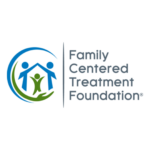Parent review feedback summary
- Majority of parent reviewers feel that Family Centered Treatment would make a big difference in the lives of impacted families.
- Parent reviewers are skeptical of the program’s efficacy without proper plan to gain parent’s trust and support, and wonder why these practices are only available to families already involved with the child welfare system. One parent stated that “the program doesn’t target the prevention of families placed in the child welfare system; rather these families must already have a systemic involvement prior to a referral.”
- They want to know that the right workers are being connected with families – properly trained and compassionate. Additionally, what measures define success with this program?
What is the intervention?
Family Centered Treatment (FCT) provides intensive support to families struggling with crisis, facing the possibility of removal, and/or effectively stabilizes youth reunifying back home. FCT supports each individual family member and the family as a group around areas of family functioning that are of most concern to them, visiting the home multiple times a week for multi-hour sessions and providing 24/7 crisis support.
FCT sees a person’s behavior as ways to meet individual needs, and so addresses behaviors through the lens of unmet needs of individuals and the family group. FCT teaches families the skills to manage homelife issues together and encourage caregivers to be the drivers of the change.
FCT is effective in working with families with experiences of multiple primary trauma types, including: exposure to violence; neglect; emotional, physical, or sexual abuse; abandonment; losses; complex trauma; domestic violence and the effects of multiple placements including adoption disruption. Families with secondary trauma from medical complexities are also included.
FCT starts with an initial evaluation which allows family members to share their story in a visual, participatory process. The FCT therapist helps make connections between how past experiences and traumas are currently affecting family functioning. The FCT therapist helps create a sense of safety for the family to share with one another and provides experience-based trauma treatment activities during the sessions.
One unique aspect of FCT is that the therapy moves forward based on family treatment milestones, not tied to the number of sessions or months in the process. Also, while home-based treatments often end once a family makes progress in the areas they were referred for, FCT continues, ensuring the family can maintains the changes they have gone through and find valuable.


What makes it a Bright Spot?
FCT has been refining is treatment model since 1992. It’s evidence-based, cost effective for states, and works extensively with families and youth who move between the child welfare, mental health, and juvenile justice systems. FCT works with the whole family so kids remain or return home, stabilize, and break the cycles of trauma.
In 2020, out of all FCT referrals, 91% had a positive placement at closure. (Positive placement means remaining at home, moving to independent living, reunifying with caregivers, or reunifying with other family members.) The positive placement rate increased to 98% for families who completed all four phases of treatment at closure. 96% of families involved in FCT reported that “the services received help us better handle our family problems.”
If a state authorizes FCT and a child is in DHS custody,the cost of FCT is covered in full by the state. Depending on the state, referrals can be made by child welfare, juvenile justice, or behavioral health workers. FCT has a “no rejection, no ejection” policy for families who are referred to FCT
What steps can you take?
- Search for an FCT provider in your area
- Find more information about FCT implementation
- Read about Rhode Island’s state FCT program
Downloadables
These downloadable resources may help provide additional context and information about this family-approved resource for systems change.
Let us know any information to consider adding to this Bright Spots practice.
Share this Bright Spot with a colleague
Have an idea?

